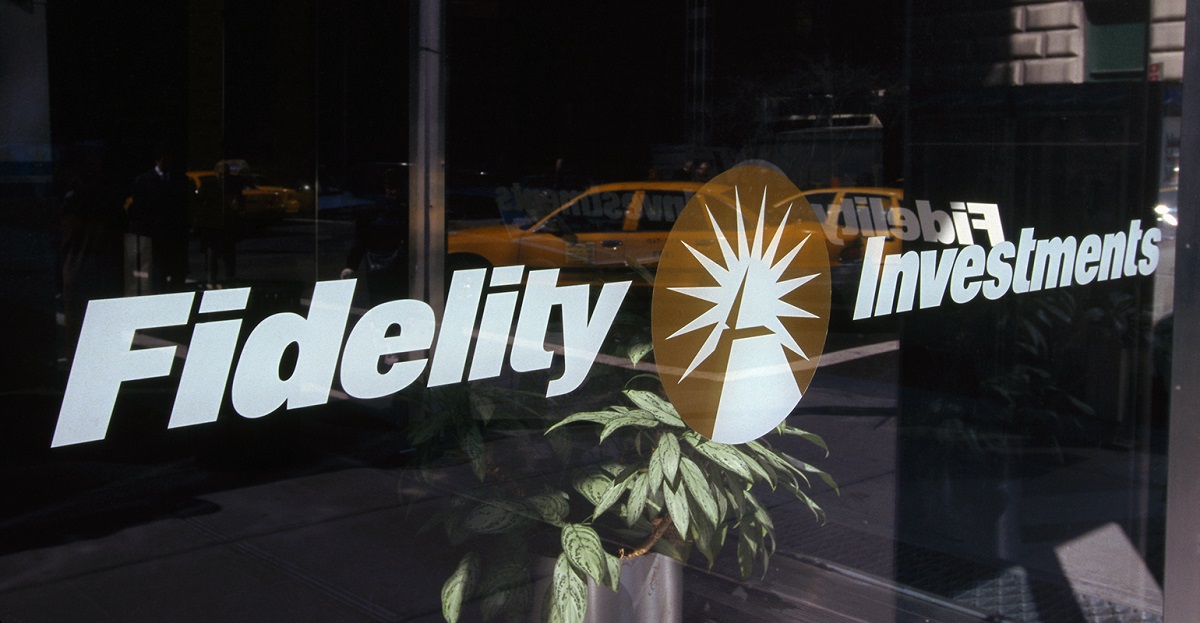Introduction
Welcome to the world of blended fund investments – a popular choice among investors looking to diversify their portfolios and achieve a balanced approach to investment. Blended funds, also known as hybrid funds, offer a unique blend of different asset classes, allowing investors to capitalize on the strengths of each category while minimizing risks.
Blended fund investments play a crucial role in modern investment strategies, as they provide investors with the opportunity to access a diversified range of assets without the need for time-consuming research and management. These funds are a hybrid combination of two or more asset classes, such as stocks, bonds, real estate, and commodities, with the aim of generating long-term capital appreciation and income.
With the ever-changing and unpredictable nature of the financial markets, investing in a single asset class can be risky. Blended funds provide an effective solution by spreading the risk across multiple asset classes, thereby reducing the impact of market volatility on the overall portfolio. This diversification helps create a more stable investment environment and enhances the potential for consistent returns over the long term.
One of the primary benefits of blended fund investments is their ability to adapt to changing market conditions. Fund managers have the flexibility to adjust the allocation of assets based on market trends and economic indicators. This active management strategy enables the funds to take advantage of potential growth opportunities in certain asset classes while minimizing exposure to areas that may be experiencing a downturn.
Furthermore, blended fund investments offer convenience and accessibility to investors of all levels. Whether you are a seasoned investor or just starting out, these funds provide a simple and hassle-free way to gain exposure to a wide range of securities. By investing in a single fund, you can instantly gain diversification across multiple asset classes, saving you the time and effort required to research and manage each investment individually.
As with any investment, it is important to carefully consider the potential benefits and risks associated with blended fund investments. In the following sections, we will explore the structure of blended funds, the various types available, factors to consider before investing, and the potential risks involved. By gaining a comprehensive understanding of these aspects, you can make informed decisions and maximize the potential benefits of blended fund investments.
What are blended fund investments?
Blended fund investments, also referred to as hybrid funds, are investment vehicles that combine different asset classes within a single fund. These funds aim to provide investors with the benefits of diversification by allocating assets across various categories, such as stocks, bonds, real estate, and commodities.
By blending multiple asset classes, these funds seek to strike a balance between growth and stability. Each asset class has its own risk and return characteristics, and blending them together can help reduce overall portfolio volatility while potentially increasing returns.
Blended funds are typically managed by professional fund managers who are responsible for determining the allocation of assets within the fund. They carefully analyze market conditions, economic factors, and the performance of individual securities to make informed decisions on asset allocation.
One common type of blended fund is the balanced fund. This fund typically has a fixed allocation to different asset classes, such as 60% in stocks and 40% in bonds. The allocation may be adjusted periodically to maintain the desired balance based on market conditions and investment objectives.
Another type of blended fund is the target-date fund. These funds are commonly used as retirement investment vehicles and allocate assets based on the investor’s anticipated retirement date. As the investor approaches retirement, the asset allocation gradually shifts towards more conservative investments to protect capital.
Blended fund investments offer several advantages to investors. Firstly, they provide instant diversification across multiple asset classes, which can help reduce the impact of any individual asset’s performance on the overall portfolio. This diversification can also mitigate the risk of significant losses due to the concentration of investments in a single asset class.
Secondly, blended funds allow investors to benefit from professional fund management expertise. Fund managers have the knowledge and experience to analyze market trends, select appropriate investments, and rebalance the portfolios as needed. This expertise can help optimize investment returns and manage risk effectively.
Lastly, blended fund investments offer convenience and accessibility. Investors can access a diversified portfolio through a single fund, eliminating the need to manage multiple investments individually. This reduces the time and effort required for research, monitoring, and trading, making blended funds a suitable option for both experienced and novice investors.
In summary, blended fund investments combine different asset classes within a single fund to provide diversification and potential growth opportunities. These funds are managed by professionals and offer convenience, accessibility, and the potential for more stable returns. As we delve deeper into the world of blended fund investments, we will explore the benefits, structure, types, and considerations involved to help you make informed investment decisions.
Benefits of blended fund investments
Blended fund investments offer a range of benefits for investors seeking a balanced and diversified approach to their portfolios. Let’s explore some of the advantages of investing in blended funds:
1. Diversification: One of the key benefits of blended fund investments is diversification. By combining different asset classes within a single fund, investors can spread their risk across various sectors, geographies, and investment styles. This diversification helps reduce the impact of any individual investment’s performance on the overall portfolio, thereby potentially minimizing losses during market downturns.
2. Risk management: Blended funds provide a balanced approach to risk management. As the fund allocates assets across different asset classes, the risk from any single investment or sector is diluted. This can help protect the portfolio from significant losses if one asset class underperforms. Additionally, fund managers often adjust the asset allocation based on market conditions and risk assessments, further enhancing risk management strategies.
3. Professional management: Blended funds are managed by professional fund managers who have the necessary expertise and knowledge to make informed investment decisions. These managers closely monitor market trends, economic indicators, and individual securities to optimize the fund’s performance. Their experience allows them to identify promising opportunities and adjust the portfolio’s allocation accordingly, potentially maximizing returns.
4. Convenience: Investing in blended funds offers convenience for investors. Instead of managing multiple investments across different asset classes, investors can gain access to a diversified portfolio through a single fund. This simplifies the investment process, saves time and effort, and eliminates the need for constant monitoring and rebalancing.
5. Potential for consistent returns: Blended fund investments have the potential to deliver consistent returns over the long term. By combining different asset classes, the fund can capitalize on the strengths of each class and adapt to changing market conditions. This flexibility allows the fund to capture growth opportunities in favorable market conditions while minimizing exposure to underperforming assets, potentially leading to stable and consistent returns.
6. Accessibility: Blended funds are accessible to investors of all levels. Whether you are a beginner or a seasoned investor, these funds provide an easy entry point to diversify your portfolio. The minimum investment amounts are typically lower compared to investing in individual securities, making blended funds a suitable option for investors with varying capital size.
7. Tailored investment strategies: Blended funds offer a range of investment strategies to cater to different investor preferences and risk tolerance levels. Whether you are focused on growth, income, or a combination of both, there are blended funds available to align with your specific investment objectives. Some funds may focus more on equities for potential capital appreciation, while others may have a higher allocation towards fixed-income securities for income generation.
Overall, blended fund investments provide investors with diversification, risk management, professional management, convenience, potential for consistent returns, accessibility, and tailored investment strategies. As we delve deeper into the world of blended funds, we will explore the various types, structures, and considerations involved to help you make informed investment decisions.
How are blended fund investments structured?
The structure of blended fund investments plays a crucial role in determining the allocation and management of assets within the fund. Understanding the structure is essential for investors to make informed decisions. Let’s explore how blended funds are structured:
1. Asset Allocation: Blended funds allocate investments across different asset classes, such as equities, bonds, real estate, and commodities. The specific allocation percentages may vary depending on the investment objectives and strategies of the fund. For example, a balanced fund may have a fixed allocation of 60% in stocks and 40% in bonds, while an aggressive growth fund may allocate a larger percentage to equities for potential capital appreciation.
2. Investment Styles: Blended funds may adopt different investment styles, such as value investing, growth investing, or a combination of both. The investment style determines the fund manager’s approach to selecting securities within each asset class. For instance, a value-focused blended fund may emphasize investing in undervalued stocks, while a growth-focused fund may seek companies with high growth potential.
3. Active vs. Passive Management: Blended funds can be actively or passively managed. Actively managed funds involve a fund manager or team of managers who actively make investment decisions, adjusting the asset allocation and selecting individual securities based on their analysis of market conditions and research. Passively managed funds, on the other hand, aim to replicate the performance of a specific index or benchmark and do not involve active decision-making. The choice between active and passive management depends on the investment strategy and the fund’s objectives.
4. Risk Evaluation and Management: Blended funds consider various risk factors associated with different asset classes and adopt risk management strategies accordingly. Fund managers analyze the risk profiles of each asset class and determine their appropriate allocation based on risk-reward trade-offs. They may also use techniques like diversification, hedging, and asset class correlations to manage risk within the fund.
5. Rebalancing: Blended funds regularly review and adjust the asset allocation to maintain the desired balance. This process is known as rebalancing and involves realigning the portfolio back to its original or target asset allocation. Rebalancing is essential to ensure that the fund continues to align with its investment objectives and risk tolerance levels, even as market conditions and asset class performances fluctuate.
6. Investor Liquidity: Blended funds are typically open-ended, which means investors can buy or sell shares of the fund at any time. This provides liquidity for investors, allowing them to easily enter or exit the fund as needed. The fund’s net asset value (NAV) is calculated daily based on the value of its underlying assets, ensuring transparency and ease of trading.
7. Reporting and Transparency: Blended funds are required to provide regular reports to investors, disclosing information about the fund’s performance, holdings, expenses, and other relevant details. This transparency allows investors to monitor the fund’s progress and make informed decisions based on up-to-date information.
Overall, the structure of blended fund investments involves asset allocation, investment styles, active or passive management, risk evaluation and management, rebalancing, investor liquidity, and reporting transparency. By understanding the structure of a blended fund, investors can evaluate its suitability, align it with their investment goals, and make informed decisions about their portfolio allocation.
Types of blended fund investments
Blended fund investments come in various types, each with its own characteristics and investment approach. Let’s explore some of the common types of blended funds:
1. Balanced Funds: Balanced funds aim to provide a balanced approach to investing by allocating assets across multiple asset classes, such as stocks, bonds, and cash equivalents. The allocation between equities and fixed income securities is typically predetermined, with the goal of achieving a balance between growth and stability. These funds are suitable for investors looking for a moderate level of risk and potential for long-term growth while mitigating volatility.
2. Target-Date Funds: Target-date funds, also known as lifecycle funds, are designed to align with the investor’s anticipated retirement date. These funds gradually shift the asset allocation to a more conservative mix as the investor approaches retirement. In the early years, the fund may have a higher allocation to equities for potential growth. As retirement approaches, the allocation shifts towards fixed-income securities to preserve capital. Target-date funds offer a convenient solution for retirement planning, providing a hands-off approach to asset allocation.
3. Asset Allocation Funds: Asset allocation funds offer a dynamic approach to portfolio diversification by continuously adjusting asset allocations based on market conditions. These funds may use market indicators, economic forecasts, and other data to determine the optimal allocation among different asset classes. The goal is to optimize returns while managing risk by emphasizing asset classes that have the potential for outperformance in the current market environment.
4. Multi-Manager Funds: Multi-manager funds involve multiple fund managers or investment teams responsible for different asset classes within the same fund. Each manager specializes in their respective asset class, allowing for expertise and diversification across the entire portfolio. This approach can offer investors access to a wide range of investment strategies and styles, enhancing the potential for consistent returns.
5. Income Funds: Income funds focus on generating a regular income stream for investors. These funds typically allocate a significant portion of assets to fixed-income securities, such as bonds, preferred stocks, or dividend-paying equities. The goal is to provide a consistent income stream through interest payments or dividend distributions, making them an attractive option for investors seeking regular income in retirement or other income-dependent goals.
6. Global or International Funds: Global or international blended funds invest in a combination of domestic and international securities. These funds offer exposure to both global and local economies, allowing investors to diversify their geographic risk and potentially capitalize on growth opportunities in international markets. Global or international funds can enhance portfolio diversification and provide access to markets and industries not available in domestic-only funds.
7. Sector Funds: Sector funds specialize in investing in a specific industry or sector of the economy, such as technology, healthcare, or energy. These funds allocate assets primarily to companies within the targeted sector, aiming to benefit from sector-specific trends, growth prospects, or investment themes. Sector funds can provide focused exposure to a particular industry, but they also carry higher sector-related risks.
These are just a few examples of the types of blended fund investments available in the market. It is essential to thoroughly evaluate the characteristics and investment objectives of each fund type to select the one that aligns with your investment goals, risk tolerance, and time horizon.
Factors to consider before investing in blended funds
Before investing in blended funds, it is important to carefully consider several factors to ensure they align with your investment goals, risk tolerance, and financial circumstances. Let’s explore some of the key factors to consider:
1. Investment Objectives: Clarify your investment objectives and understand what you aim to achieve with your investment. Are you investing for long-term growth, regular income, or a combination of both? Different types of blended funds have varying investment objectives, so choose the fund that best aligns with your goals.
2. Risk Tolerance: Assess your risk tolerance level. Although blended funds aim to provide a balanced approach to investing, they still carry different levels of risk depending on the asset allocation and investment styles. Understand your comfort level with market fluctuations and choose a fund that matches your risk tolerance.
3. Historical Performance: Evaluate the historical performance of the blended fund, including its returns and volatility over different market cycles. While past performance does not guarantee future results, it can provide insights into the fund’s ability to deliver consistent returns and manage risk.
4. Fund Management: Research the fund’s management team and their track record. Experienced and skilled fund managers can significantly impact the fund’s performance and the ability to capitalize on market opportunities. Look for a team with a long-term track record, expertise in managing blended funds, and a disciplined investment process.
5. Expense Ratios: Consider the expense ratios associated with the blended fund. These fees can vary across funds and impact your investment returns. Compare the expense ratios of different funds and ensure they are reasonable in relation to the fund’s performance and the level of service provided.
6. Fund Size and Liquidity: Examine the fund size and liquidity. Larger funds may offer advantages in terms of economies of scale and better liquidity, making it easier to buy or sell shares. Smaller funds, on the other hand, may offer more flexibility and the potential for higher returns. Consider your investment size and liquidity requirements when selecting a blended fund.
7. Fund Documentation: Review the fund’s prospectus, annual reports, and other documentation provided by the fund management company. Pay attention to the fund’s investment strategy, asset allocation, risk disclosures, fees, and any restrictions or limitations that may impact your investment decisions.
8. Tax Considerations: Understand the tax implications associated with investing in blended funds. Depending on your jurisdiction and local tax laws, dividend income, capital gains, and distributions from the fund may be subject to taxes. Consider consulting with a tax advisor to assess the tax impact of your investment in blended funds.
9. Investment Horizon: Determine your investment horizon. Blended funds can be suitable for both short-term and long-term investment goals. However, different funds may have varying strategies and asset allocations based on the investment horizon. Choose a fund that aligns with your investment time frame and liquidity needs.
10. Monitor and Review: Regularly monitor and review your blended fund investment. Keep track of the fund’s performance, the market conditions, and any changes in the fund’s objectives or asset allocation. This will help you make informed decisions and ensure the fund continues to align with your investment goals.
By carefully considering these factors before investing in blended funds, you can make informed decisions that align with your investment objectives, risk tolerance, and overall financial plan.
Risks associated with blended fund investments
While blended fund investments offer various benefits, it is important to consider and understand the risks that come with investing in these funds. Evaluating the risks can help you make informed investment decisions and manage your expectations. Here are some key risks associated with blended fund investments:
1. Market Risk: Blended funds are subject to market risk, as the performance of the fund is influenced by fluctuations in the overall market. Changes in economic conditions, geopolitical events, and investor sentiment can impact the value of the underlying assets, potentially resulting in losses. It’s important to recognize that even a diversified portfolio can still be vulnerable to market downturns.
2. Asset Class Risk: Each asset class within a blended fund carries its own set of risks. For example, equity investments are subject to stock market volatility, while fixed-income investments may be affected by changes in interest rates. Real estate investments can be influenced by factors such as property values and rental income. It’s important to understand the risk characteristics of each asset class within the fund.
3. Performance Risk: The performance of blended funds can vary depending on the investment strategies and the fund manager’s decisions. Poor investment decisions, incorrect asset allocation, or the failure to accurately predict market trends can result in underperformance compared to benchmarks or peer funds. It’s essential to review the fund’s historical performance and the expertise of the fund manager before investing.
4. Manager Risk: Blended funds depend on the expertise and decision-making of fund managers. If a fund manager lacks experience or makes poor investment decisions, it can impact the fund’s overall performance. Changes in the management team can also introduce uncertainty and potential performance variations. Assessing the track record and expertise of the fund managers is crucial in evaluating manager risk.
5. Liquidity Risk: Some underlying assets in blended funds may be illiquid, such as certain types of real estate investments or private equities. This can pose challenges when investors want to redeem their shares or when the fund needs to meet redemption requests. Illiquid assets may take longer to sell or may be sold at a discounted price, impacting the fund’s net asset value (NAV) and potentially causing losses for investors.
6. Currency Risk: Blended funds that invest in international assets are exposed to currency risk. Fluctuations in exchange rates can impact the value of foreign investments, either positively or negatively. Currency risk can introduce additional volatility and uncertainty to the fund’s returns, especially when investing in a range of currencies.
7. Concentration Risk: Blended funds may have a concentrated allocation in certain asset classes, sectors, or geographies. This concentration can increase the fund’s exposure to specific risks associated with those areas. If the concentrated investments perform poorly, the overall fund performance may be adversely affected.
8. Fees and Expenses: Blended funds have associated fees and expenses, including management fees, administrative costs, and operating expenses. These fees reduce the fund’s net returns and impact the investor’s overall profitability. It’s important to assess the fee structure and compare it with the performance and services provided by the fund to ensure they are reasonable and justify the associated costs.
9. Systemic Risks: Blended funds can be exposed to systemic risks, such as financial crises, recessions, or regulatory changes that affect the broader financial markets. These risks can impact the performance and liquidity of the underlying assets within the fund, potentially leading to significant losses.
10. Inflation Risk: The erosion of purchasing power due to inflation is a risk that affects the overall value of any investment, including blended funds. Inflation can erode the real returns generated by the fund’s investments, reducing the investor’s purchasing power over time.
It is crucial to carefully consider these risks and engage in thorough due diligence before investing in blended funds. Understanding the risks can help you assess the suitability of blended funds within your overall investment strategy and take appropriate measures to manage and mitigate these risks.
Conclusion
Blended fund investments provide investors with a flexible and diversified approach to building their portfolios. By combining different asset classes within a single fund, these investments offer the potential for better risk management, consistent returns, and convenience. However, it is important to carefully consider various factors before investing in blended funds.
When evaluating blended fund investments, investors should assess their investment objectives, risk tolerance, and time horizon. Understanding the historical performance, expertise of the fund managers, and the fund’s structure and management style are crucial in making informed investment decisions that align with individual goals.
While blended funds offer advantages such as diversification, professional management, and accessibility, there are also risks involved. Market volatility, asset class risks, performance variations, and liquidity risks are factors to be mindful of. Additionally, fees and expenses associated with blended funds should be carefully evaluated to ensure they align with the fund’s performance and services provided.
By thoroughly considering these factors and conducting due diligence, investors can make informed decisions that align with their financial goals and risk tolerance. It is important to regularly monitor blended fund investments, reviewing the fund’s performance and market conditions, and making adjustments as needed to ensure they continue to align with your investment strategy.
Blended fund investments can be a valuable addition to an investor’s portfolio, offering the potential for diversification, risk management, and consistent returns. However, it’s important to remember that investing always carries inherent risks, and past performance is not indicative of future results.
Before making any investment decisions, it is advisable to consult with a financial advisor or professional to determine the suitability of blended fund investments based on your specific financial circumstances and investment goals.

























